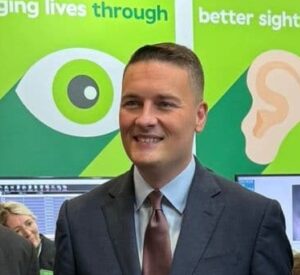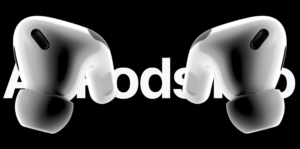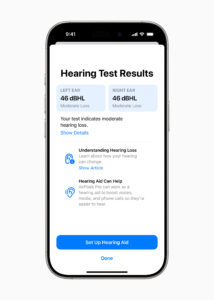A green light for the much talked-about Apple Hearing Aid Feature – A WELCOME CHANGE?
In the first two months of 2025 the UK hearing instrument landscape experienced a significant shift, with groundbreaking new guidance from the government and the introduction of a hearing aid algorithm for the Apple AirPod Pro 2 model.
These changes have the potential to cause a shift in the traditional model of hearing instrument distribution in the UK, but the full extent of their impact remains to be seen. Are device manufacturers optimistic about the potential for greater awareness and adoption of hearing aids, or will they take a more cautious approach?
“Ultimately, these developments may foster greater awareness of hearing loss and hearing aids and inspire people to have discussions or seek advice where previously they may not have, but any long-term impact on the market remains to be seen.”
Over-the-counter hearing aids in the UK: A new era for accessibility
On January 16, the UK government’s Department of Health and Social Care (DHSC) published fresh guidance allowing businesses to sell certain hearing instruments directly to consumers, which was the green light for Apple to roll out its new Hearing Aid feature. This algorithm combines hearing test and hearing aid software functionalities, enabling users to take a hearing test at home using a mobile app, and if the test identifies mild to moderate hearing loss, they can activate the hearing aid function within the same earphones.

© Specsavers
Wes Streeting, Health and Social Care Secretary.
During the announcement in January, Health and Social Care Secretary Wes Streeting said that the move is part of a wider initiative to encourage innovation in the medical technology space, noting that the UK could become a “powerhouse for medical technology” by easing restrictive regulations.
The policy is intended to improve access to hearing aids for people with hearing loss and reduce pressure on current NHS audiology waiting lists. The potential impact is significant with one in three adults in the UK thought to be affected by hearing loss, and the number rising to over 50% among individuals over 55.
In particular, the guidance reflects a growing focus on increasing awareness and uptake of hearing technology, as a significant number of individuals with hearing loss still do not use hearing aids. Approximately 53% of people with hearing loss in the UK currently use hearing aids, but nearly half of those who could benefit from them have yet to adopt the technology.
Apple’s AirPods Pro 2 Hearing Aid feature: A new player in the market

© Apple
Apple announced its Hearing Aid feature software availability in the UK on February 24, 2025 calling it “an end-to-end hearing health experience focused on prevention, awareness, and assistance”.
Adding to the government announcement is the release of the new Hearing Aid feature for Apple AirPods Pro 2 model. In February, the tech giant announced immediate availability of the software for those with the latest AirPods model, which is said to enhance the listening experience for those with mild to moderate hearing loss.
While AirPods have long been marketed for their high-quality sound and noise-cancelling features, the introduction of a hearing aid algorithm opens up a new frontier for Apple. The brand’s immense reach and existing diverse customer base make this move particularly interesting and we will be watching consumer reaction with interest; could this be a catalyst to shift the stigma that some people still have around wearing hearing devices?
Apple’s approach is aimed at the consumer market with mild to moderate hearing loss, and hearing instrument manufacturers do not see the new feature making a change to existing audiology practices.
Paul Surridge, chair of the British and Irish Hearing Instrument Manufacturers Association (BIHIMA) said: “There will always be a need for the service driven care skills offered by audiologists and hearing care professionals. Though a proportion of people might benefit from products like the AirPods, many others will still need the clinical experience and expertise required for in depth testing, fitting and adjusting of hearing instruments, and management of complex cases.”
“Could the Apple Hearing Aid feature be a catalyst to shift the stigma that some people still have around wearing hearing devices?”
What does this mean for hearing instrument manufacturers?
Paving the way for new technologies and routes of access for hearing instrument consumers is certainly a shift, but its full impact is yet to be seen. Paul continued: “We don’t yet know how much of a market there will be for alternative low-cost hearing solutions because of the unique way we access healthcare in the UK.”

Paul Surridge, Chairman of BIHIMA
Photo: PW
“We are fortunate to have the NHS, where people can access specialist hearing services and high-quality hearing devices free of charge, and this contributes enormously to the fact that the UK has one of the highest adoption rates for hearing instruments. Having said that, we also know that many NHS services are working with long waiting lists, there is a shortage of people training to become audiologists.
“This is why it’s so important to explore new ways of working, just as people explore new ways of living. It’s unusual if you go somewhere and don’t see people using wireless earphones or earbuds these days, which demonstrates just how much people’s view of using hearing devices has shifted, regardless of the purpose.”
In terms of technology, the world of algorithms and remote adjustment is nothing new, and between the hearing instrument manufacturers in the UK there is a broad choice of devices that use cutting-edge technologies, including AI that learns the sounds you want to hear and reduces those you don’t, or the capability to accurately and clearly follow moving speakers during conversation in a busy area.
Many sectors of the hearing care industry will be watching how these new changes will have an impact, not only on manufacturing of hearing devices but also in how people choose to access hearing care. At this stage, it seems fair to say that the introduction of over the counter guidance and Apple’s new Hearing Aid feature may not significantly alter the core dynamics of the industry just yet.
“The question isn’t if we support it, but rather why wouldn’t we?” – Paul Surridge, BIHIMA chair.
Conclusion

© Apple
The Apple Hearing Aid feature is an algorithm combining hearing test and hearing aid software functionalities.
The move towards greater accessibility is generally seen as positive and our need for clinical expertise and professional fitting will remain crucial. Ultimately, these developments may foster greater awareness of hearing loss and hearing aids and inspire people to have discussions or seek advice where previously they may not have, but any long-term impact on the market remains to be seen.
Paul concluded, “Overall, we see this as a positive development for the industry. It is estimated that there are millions of people in the UK who don’t yet use hearing instruments but would benefit from them, and a new approach to how people access devices could very well change that. The question isn’t if we support it, but rather why wouldn’t we?”